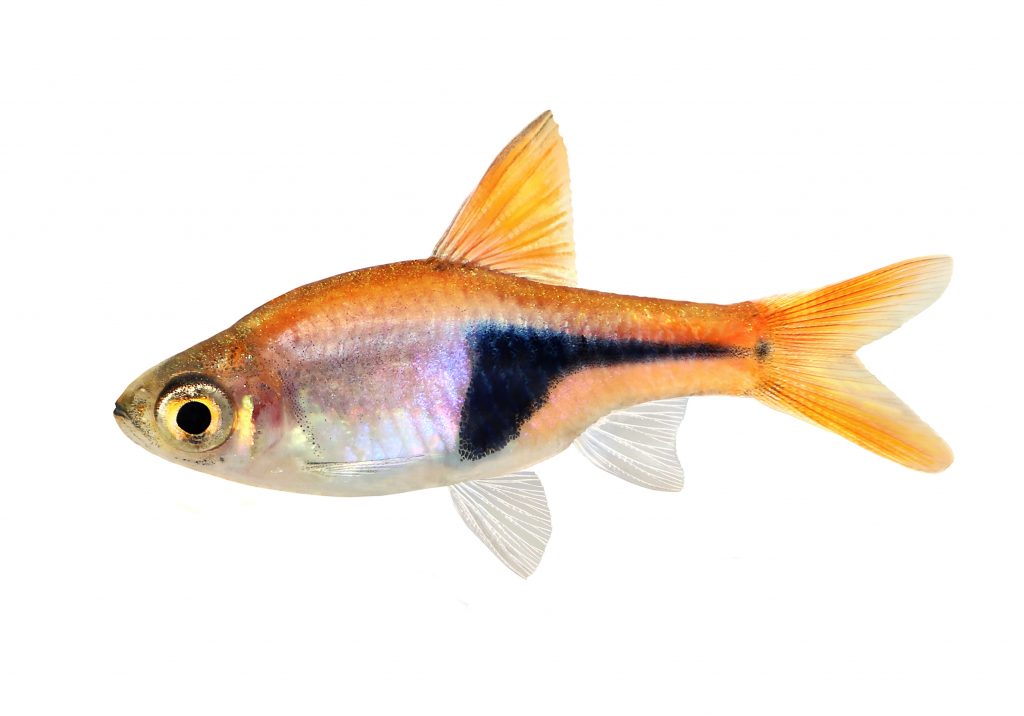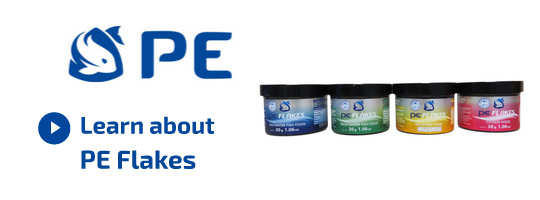Rasboras Species
Rasboras
Rasboras are a commonly kept group of small cyprinids. Their attractive appearance, small size and pleasant dispositions make them ideal candidates for aquariums. They are a very frequently kept fish in community tanks due to their peaceful personality, attractive coloration and ease of maintenance.
The Harlequin Rasbora (Trigonostigma heteromorpha) is one of the most commonly sold species of Rasbora. Other common species include Axelrod Rasbora (Rasbora axelrodi), Scissortail Rasbora (Rasbora trilinieata), and the Black Harlequin Rasbora (Corydoras arcuatus).
Biology
Rasboras are native to Southeast Asia, where they can be found in small fast flowing freshwater streams. Like all cyprinids, they are egg layers. During spawning the males will pursue the female as she spreads her eggs on the underside of vegetation. Females rasboras are larger than males, and can be identified easily due to their larger appearance when they are full of eggs. Rasboras are generally small fish, with most species staying well under 4” (10cm).
Captive Care
Rasboras can make great aquarium inhabitants, provided their husbandry needs such as diet, water quality and tank space are met. These small fish do best when kept in groups of their own species, though they can mix well with other small schooling fish. Rasboras are a favorite among hobbyists with planted tanks. They can be kept in community aquariums, however it is imperative to avoid any aggressive or predatory fish that may nip at or damage the smaller rasboras.
Most Rasboras feel right at home with temperatures between 72F and 77F. Warmer water can be used to stimulate breeding in Rasboras.
It is important to consider carefully what species of Rasboras may be best for your aquarium. While smaller species such as the Axelrod Rasbora (Rasbora axelrodi) are suited to tanks as small as five gallons, larger species such as the Scissortail Rasbora (Rasbora trilineata) may be better suited to a larger tank.
Suggested Piscine Energetics Products
We suggest a diet based on Piscine Energetics Frozen Mysis, Piscine Energetics Frozen Calanus, Piscine Energetics Pellets (1mm and 2mm) and Piscine Energetics Saltwater Flakes.
What people are saying about PE:
After feeding my seahorses your mysis for about 3 months; they are fat and happy!!! they give me baby seahorses (at least 300 ) each 14 days... So I'm very satisfied of your mysis.The frozen mysis is about 70 per cent of their diet.
Yvan Charbonneau Quebec
I am keeping these Indian mudskippers -- very cute -- about 3-4 inches long. I've been feeding them frozen bloodworm, and decided to try them on mysis. I feed them in a "shallows" in the 150 I have set up for them. The minute the mysis hit the water they were on it, frozen and all. They gorged until their little bellies were almost bursting. I have yet to see an aquatic creature that does not go absolutely nuts over PE Mysis.
David Lass Massachusetts
I picked up my Mysis today and they arrived wonderfully. All the fish I fed them to, absolutely devoured them. They are my Frontosas new favorite food. All my Discus ate them up eagerly...heads and all!! I want to thank you again for your excellent service and product.
Pierre Brenton Nova Scotia
I have a large saltwater aquarium (220 gallons) with very expensive fishes and invertebrates. I tried to feed them with your PE Mysis and they really went crazy about it. Since that time, some of my fishes refuse any other product I offer them!






